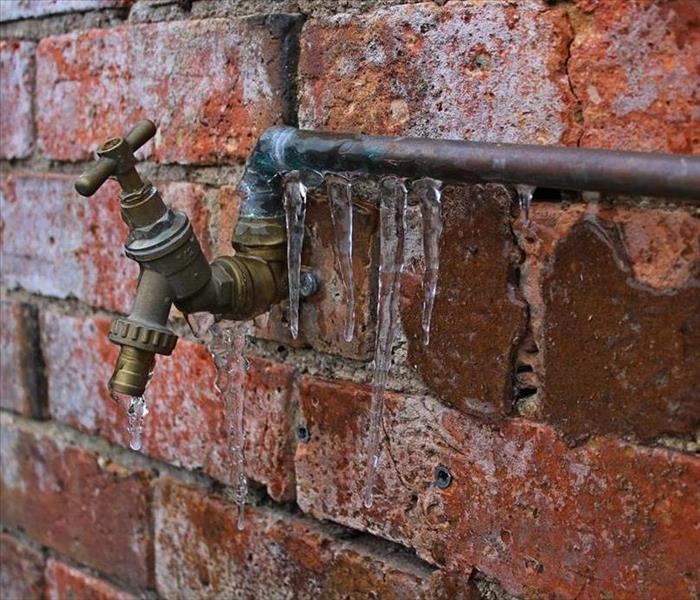Winter is Here, and so are the Frozen Pipes
1/9/2019 (Permalink)
The holidays have come and gone, but winter is still here for a few more months and one of the seasons with the most water damage is still to come.
With the colder months, comes the risk of frozen pipes and the danger that those pipes could burst. Thankfully frozen pipes are easily prevented. One of the simplest methods to prevent pipes from freezing is to increase the warm air circulation around the pipes at risk. For example, if there are water pipes in the garage that you are concerned about, close the garage door. You can also open cabinet and closet doors to allow warm air flow around water supply lines. Additionally, moving water is not as quick to freeze as stagnant, so allowing even a small trickle of water to flow from sinks and showers can help keep the pipes unfrozen. If you are planning to be out of town, try not to leave your thermostat lower than 55 degrees, as temperatures lower than this can raise the risk of a frozen pipe and the resulting water damage.
For a longer lasting solution to this problem, you can also consider adding insulation to pipes that may be exposed to extreme cold. Pipes in the garage or in the exterior walls that don’t have sufficient insulation could be at risk. Solutions for this could be as simple as wrapping towels or newspaper around the pipes at risk to help mitigate the lower temperatures. You can also add insulation to the surrounding areas, which could mean caulking and closing holes or cracks that are allowing the cold are in. However, you will want to make sure that your repairs are not inadvertently closing the pipes off from the heat source instead of the cold outside air. Recently, I was at a home where the pipes had frozen because a contractor had closed up a hole in the back of the cabinets that summer. Once the cold temperatures of winter hit, the warm air from the kitchen could no longer reach the pipes in the wall and they froze.
If you do turn on a sink or shower and no water comes out, this could mean a frozen pipe. In this situation, you do have a few options to thaw the pipe and hopefully avoid the subsequent water damage. While you work to thaw the pipe, keep the faucet on. This will let you know when the pipe is thawed and the flowing water will help to speed up the process. You can use a heating pad or heated blanket to begin thawing the frozen area. You could also try a hair dryer or space heater. You just want to be sure not to use any kind of open flame to thaw the pipe. As water begins flowing you are almost there but keep applying heat until water pressure is back to normal.
Allowing ice to sit untended in your pipes for too long gives the ice time to expand and possibly burst the pipe. Avoid this water damage and act now, before the pipes freeze, and hopefully your home will have a warm and dry winter. However, if something does happen, give us a call at 434-977-5850. We are always here to help.






 24/7 Emergency Service
24/7 Emergency Service
